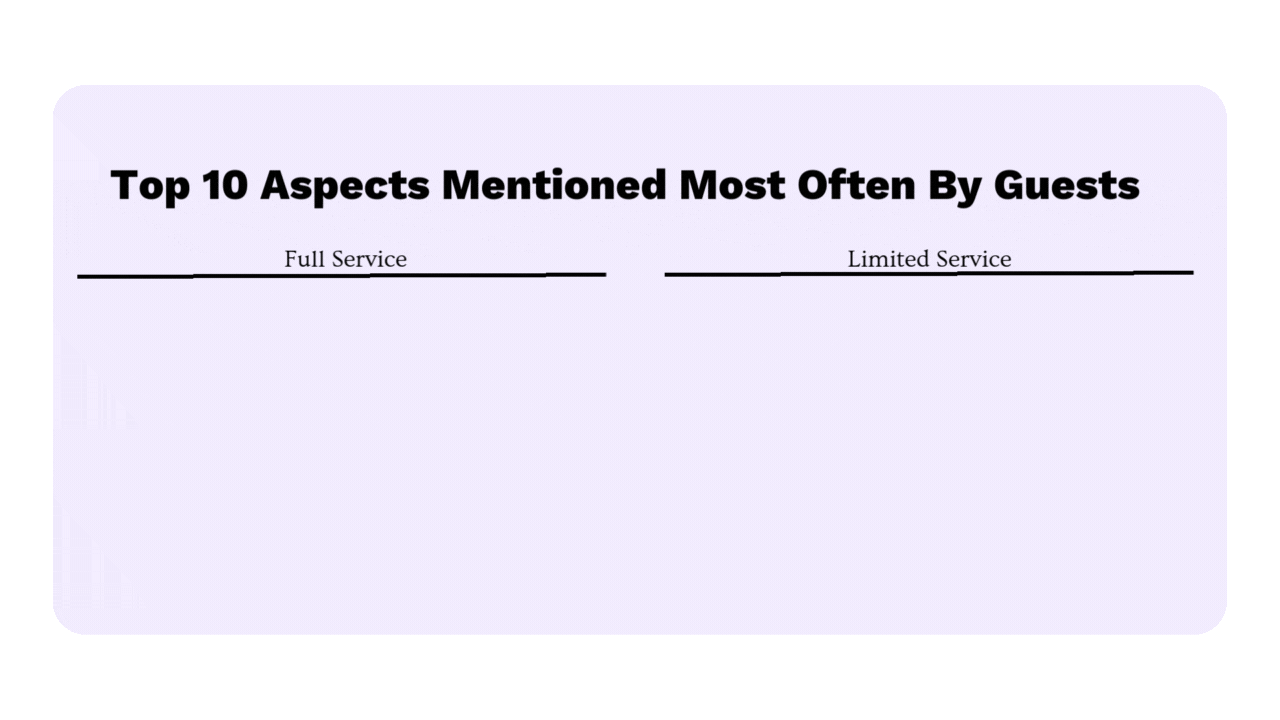The Value Equation—How Restaurants Can Deliver More Without Cutting Prices
A Deep Dive Into What Value Means for Consumers and How Restaurants Can Compete
Why Value Matters More Than Ever
Value is more important than ever for restaurant guests in 2025.
Yet, that doesn’t mean they’re just looking for the lowest prices.
Instead, consumers are redefining what value means.
They consider factors like:
- Portion sizes
- Food quality
- Convenience
- Brand trust when deciding where to dine
For restaurant operators, this presents a challenge…
How do you meet consumers’ expectations of value without slashing prices… or worse, sacrificing margins?
With rising food, labor, and operational costs, traditional discounting strategies aren’t sustainable.
Restaurants must enhance perceived value. For example, menu design, loyalty programs, operational efficiencies, and improved guest experiences.
By leveraging data, restaurants can craft a winning value strategy.
And one that doesn’t just attract budget-conscious diners.
Rather but builds long-term loyalty and increases profitability.

What Value Means to Consumers in 2025
Perceived Value vs. Actual Price
Value isn’t just about what something costs—it’s about what a guest feels they are getting for their money.
Let’s say a meal costs $15. But, say it offers generous portions, high-quality ingredients, and a seamless ordering experience.
It may feel like a much better deal than a $10 meal that’s poorly executed, slow, or inconsistent.
Emotional and Functional Value
Consumers assign value to restaurants based on two key dimensions:
- Functional Value:
The tangible aspects of a meal—portion size, ingredient quality, and pricing. - Emotional Value:
The intangible benefits of dining—brand affinity, health-conscious options, sustainability efforts, and convenience.
Guests are increasingly willing to pay a premium, especially if it aligns with their values.
For example:
- Plant-based options
- Supporting ethical sourcing
- Providing a frictionless digital experience
Key Consumer Trends in Value Perception
- Deals Over Discounts:
Consumers increasingly prefer bundled deals over straight price cuts. This could mean meal combos, and limited-time offers. - Customization Wins:
Guests perceive greater value when they can personalize meals. For example, portion sizes, toppings, or build-your-own options. - “Quality Over Everything” Mentality:
Consumers are justifying premium spending. This happens especially when they perceive high quality in ingredients and preparation.
Value Trends in the Restaurant Industry
What the Data Says
This was compared to the same period last year.
Brands that communicate value outperform those that rely on low prices.
And that was even amongst premium-priced segments.
The Role of Promotions vs. Everyday Value
Short-term discounts can drive transactions, but they don’t always build long-term loyalty.
Many successful brands are shifting focus toward consistent value offerings.
This includes things such as:
- Everyday low prices on select items
- Loyalty-driven perks
- Bundle strategies that make premium items feel like a better deal
Fast Food vs. Full-Service: Different Value Expectations
- Quick-Service (QSR):
Guests expect speed, consistency, and strong price-to-portion ratios. Value is often driven by deals, app promotions, and limited-time menu items. - Full-Service (FSR):
Consumers perceive value in hospitality, ambiance, and food quality. Upselling strategies and experience-driven offerings can justify premium pricing.
Technology’s Role in Value Perception
- AI-powered recommendations increase perceived value by personalizing deals.
- Digital ordering and loyalty integrations make transactions more seamless.
- Subscription models provide consistent perceived value while ensuring repeat visits.
How Restaurants Can Deliver More Value Without Cutting Prices
1. Enhance the Guest Experience
Customers equate efficiency and ease with value. Restaurants can increase perceived value without changing prices if they…
- Improve operational speed
- Reduce friction in ordering
- Enhance digital experiences
2. Focus on Perceived Value Drivers
Rather than lowering prices, emphasize elements that make meals feel more valuable:
- Smart Bundling:
Offer meal combos that balance high-margin and low-margin items. - Premium Customization:
Let guests build their ideal meal with add-ons that drive check averages.
3. Invest in Loyalty & Rewards Instead of Discounts
Reward repeat customers with targeted incentives rather than cutting prices for all guests.
This could mean leveraging:
- AI-driven loyalty programs personalize offers to encourage repeat visits.
- Exclusive rewards tiers drive engagement and higher spend per visit.
4. Optimize Menu Engineering for Value
- Highlight High-Perceived-Value Items:
Use menu psychology to showcase dishes that feel like a good deal. This means featuring premium ingredients or emphasizing portion size, for example. - Strategic Pricing Anchoring:
Position mid-tier and premium options in a way that encourages trade-ups.
5. Leverage Transparency & Brand Trust
- Ingredient Quality & Sourcing:
Consumers are willing to pay more for transparency and quality assurance. - Sustainability Messaging:
If a brand invests in sustainable practices, marketing these efforts enhances perceived value. - Storytelling & Emotional Branding:
When consumers connect emotionally with a brand, price sensitivity decreases.
Conclusion: The Future of Value in Restaurants
The definition of value in the restaurant industry is shifting.
It’s no longer just about offering the lowest price.
Perceived Value in Restaurants is about creating an experience that justifies the cost.
And it could all be done by leveraging data to make better decisions.
Restaurant operators can identify value strategies tailored to their brand and customer base.
Learn more about the data you can leverage today.